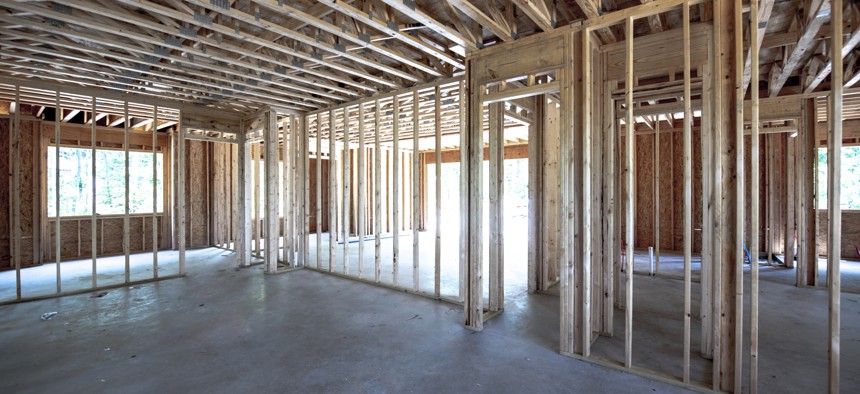Apartment Construction in US Rises to Levels Not Seen Since 1970s

Dan Reynolds Photography via Getty Images
But a new report also predicts a slowdown in the coming year. Meanwhile, single-family homebuilding remains sluggish.
Between inflation, high mortgage rates and supply-chain issues, it’s no secret the last year has been difficult for the housing industry. But better times could be ahead, according to an industry group.
While the housing crisis continues in communities across the country, there are more apartments under construction now than in any year during the past five decades, according to a new report from the National Association of Home Builders. And though new multifamily construction is expected to drop in the coming year, single family starts should be on the rise again by 2024 after dipping in 2022.
Last year was good for multifamily construction. But with 940,000 apartments in the pipeline–the highest total since 1973–construction is expected to slow in the year ahead, according to the report. With so many projects already in the works, coupled with slowing rental growth and rising unemployment, new apartment construction is expected to drop 28% this year before stabilizing at 374,000 starts in 2024.
On the single-family front, the sluggish construction rate is likely to get worse before it gets better. NAHB expects single-family construction to bottom out this year at 744,000 units before rebounding to 925,000 in 2024.
To address the country’s severe housing deficit, single-family home construction will need to exceed 1.1 million starts annually, according to NAHB.
High mortgage rates have been a primary factor hindering demand for new homes, the report said.
The Federal Reserve has been bumping up interest rates in an effort to rein in inflation, contributing to mortgage rates that have more than doubled since the beginning of last year. But after hitting a 40-year high, inflation appears to be cooling, and the Fed is expected to stop increasing rates later this year, according to the report.
“Falling rates will set the stage for a housing rebound later in 2023, and a better affordability environment will lead to a recovery of housing demand,” said Robert Dietz, chief economist for the association, at a recent press briefing.
Only 42% of homes are considered affordable to a typical household, the lowest share since the Great Recession, which hit in late 2007. After increasing 40% during the pandemic, home prices could drop as much as 15% this year, the National Association of Home Builders predicted.
To increase housing production, bolstering the construction workforce “will be job No. 1,” Dietz said, as there were 388,000 vacant positions in November. The industry will need 740,000 workers annually to meet demand and replace retirees.
Molly Bolan is the assistant editor for Route Fifty.
NEXT STORY: More details emerge on NYC free internet pilot






